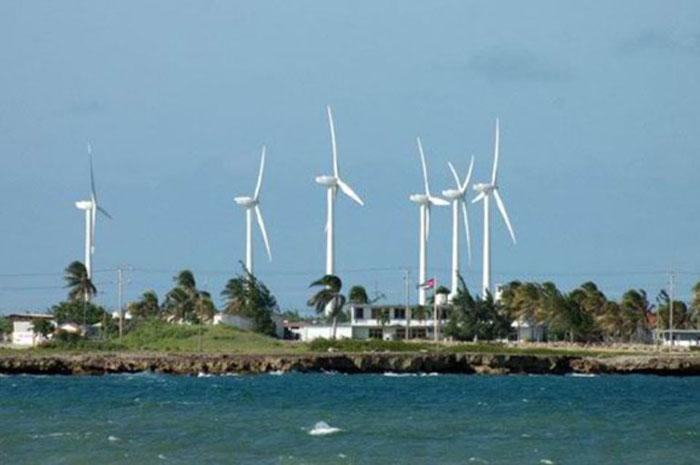Investments in Holguín favor the use of renewable energy
- Written by Redacción ¡ahora!
- Published in Holguin
- Hits: 973

The province of Holguín is leader in the use of wind energy. This eastern region has the two largest wind farms of their kind in Cuba, located in the coastal municipality of Gibara, according to a publication of the newspaper Trabajadores.
Built in 2008 and 2010, respectively, the Gibara 1 and 2 wind farms have an installed capacity of 9.6 megawatts and have contributed to the National Electric Energy System (SEN) more than 100 Gigawatts, while so far this year they have served more than 2,565 mw/h, according to the report.
The geographical conditions of the northern coast of Holguín allow for better use of the wind, which is why there are plans to build other wind farms such as Gibara 3, Banes, Río Seco 2 and Río Seco 1 and Jagüeyes, said César Sarmiento Ávila, Investment Director of the Holguín Electricity Company.
As for solar energy, the Miramar photovoltaic park was recently put into operation with a capacity of 4 MW, which was added to two other existing ones in the area of Yuraguanal, in the town of Rafael Freyre, which together generate 4.4 MW.
According to Sarmiento Ávila, Holguín has identified 27 areas in all its municipalities where small photovoltaic parks can be installed in the future.
The Investment Director also pointed out that in order to expand the use of solar energy, there are five areas that are part of two large projects approved last year in the province. Today, work is being done on a first stage that includes the construction of a 21.8 MW photovoltaic park in Mayarí, in the area known as Corúa 5; and another, of the same capacity, in Pilón, in the municipality of Antilla, which are expected to be synchronized with the SEN in the last quarter of this year.
Three other photovoltaic parks will be prepared in a second stage, which will be located in Moa; Potrerillo, in “Rafael Freyre”, and in the community of Providencia, close to the Frank País International Airport.
In addition to the large generation projects, Holguín has launched initiatives to bring renewable energy to isolated communities that are not connected to the SEN, especially those located in remote or difficult-to-access areas.
He explained that there are several collaborative projects that include isolated solar systems of one kilowatt (kW) and two kW, which will benefit families residing in difficult to reach areas, such as the FRE Local of the University of Sancti Spíritus and the Former Project, which through a donation from Canada will allow the installation of solar systems in 502 homes.
